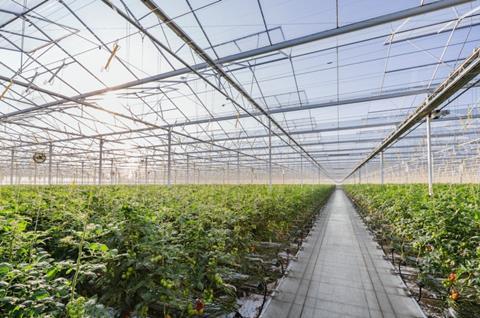
Europe’s CO2 shortage was well documented this summer, prompting newspaper headlines and notices in supermarkets apologising for poor availability in certain products. The UK was not alone in facing widespread shortages of beer, soft drinks and even meat in June, and this was largely due to a longer than usual break in the production of ammonia – one of the principle sources of CO2 for food production in Europe.
The use of carbon dioxide in fizzy drinks is perhaps most immediately obvious, but its importance to greenhouse horticultural production can sometimes be overlooked – it is basic science that plants need the gas to photosynthesise and grow, using energy from sunlight to convert CO2 and water into sugar and other molecules.
Since carbon dioxide is a greenhouse gas, there have been big efforts by glasshouse growers, particularly in the Netherlands, to produce less of it in recent years, with many switching to more sustainable fuel sources like geothermal energy. According to tomato producer Prominent, a recent report showed that the greenhouse horticulture sector in the Netherlands expects to save 2.2 million tonnes of greenhouse gas by 2030 and is on course to be climate neutral by 2040. However, it is unavoidable that growers need large quantities of carbon dioxide to grow their crops properly, especially on hot summer days.
Somewhat inconveniently for them, the combined heat and power systems traditionally used to generate CO2 are gradually being phased out in a bid to make the industry more environmentally friendly, thus depriving producers of a consistent and reliable source of the gas.
“These big gas engines are a highly efficient way to supply our greenhouses with energy but the national government in the Netherlands, and the consumers of our products, want us to reduce our CO2 emissions – and rightly so,” explains Prominent’s energy manager Jacco Besuijen. “That means we need to burn less natural gas, and we’ve already reduced our methane consumption by about 10 per cent.”
This has forced greenhouse growers like Prominent to look to the external market for the CO2 they depend on. The most common suppliers are factories producing ammonia for use in fertilisers, with carbon dioxide given off as a waste product. But there are two main problems with this supply arrangement: firstly, that these factories also serve beer and soft drinks producers, meaning shortages are acutely felt if CO2 production drops; and secondly that plants tend to all do their maintenance work during the summer months when demand for fertilisers is low. Unfortunately, this is exactly when greenhouse growers need CO2 the most since there is the greatest scope for photosynthesis. “There’s a mismatch between supply and demand,” says Besuijen.
This summer an unusually high number of ammonia factories halted production, with at least five producers in northern Europe shutting due to a combination of technical failures and planned repairs. As a result, glasshouse growers have been particularly hard hit this year. Dutch greenhouse growers have been grappling with CO2 availability for five to six years now, according to Besuijen, and three years ago Prominent decided to take action, installing gas storage tanks so it can save some of the CO2 it buys at other times of year and lessen the impact of summer shortages.
In a bid to impress how critical the situation has become, Prominent recently wrote an open letter to the Dutch minister of agriculture, Carola Schouten, as well as a host of other authorities, politicians and growers. In it, the tomato supplier expressed the need to find new sources of carbon dioxide to keep the country’s extensive network of greenhouses up and running.
In the horticultural sector, the solution to the shortage could lie in sourcing carbon dioxide from incinerators, which burn household waste and convert it to heat and electricity. “We could collect CO2 from the incinerators’ exhaust gases and feed it into the grid,” explains Besuijen. “I think that’s the first step to solving the problem because there’s always rubbish so those factories will always have enough CO2 no matter what time of year it is.”
Other, more environmentally-friendly, possibilities are to capture CO2 from the outside air using a membrane of some kind, or to get it from biomass or biomethane (a type of gas created from biodegradable material).
“We need help from the government to solve the problem,” says Prominent’s energy manager, “and as tomato growers we want to give government a signal that it’s urgent.”






No comments yet